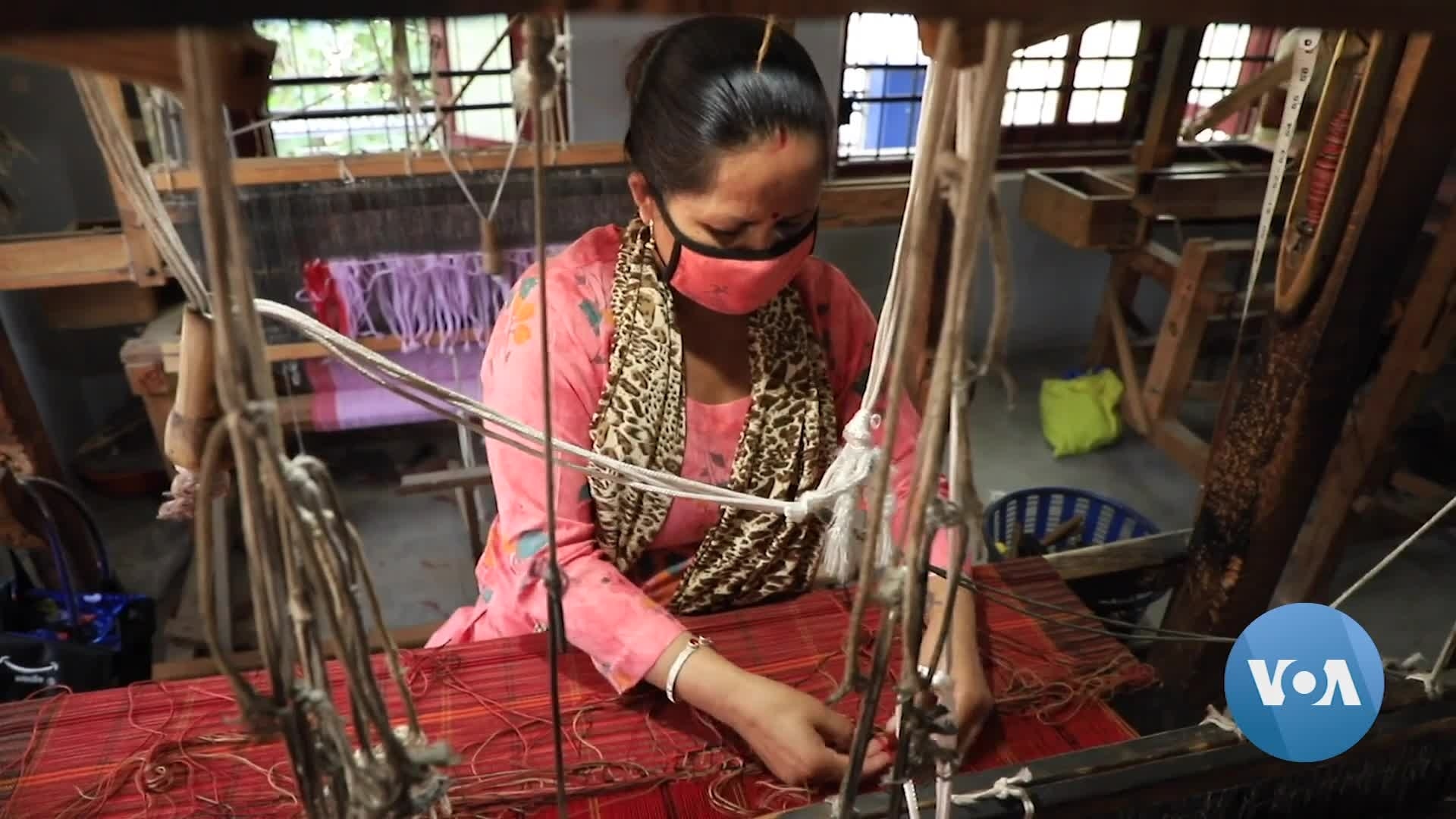NEW DELHI – At a workshop in Kullu district in North India, dozens of artisans bend over hand-operated looms, deftly weaving a garment called the sari in vibrant shades of pink and orange.
The sari is an unstitched, flowing garment worn by women in India and in South Asian countries like Bangladesh. It is a new addition to the hilly region’s handloom industry, which for decades focused on making shawls and stoles with traditional patterns from woolen yarn.
The hope is that adding the handwoven sari to shop shelves will draw in new customers and boost incomes for hundreds of women in the region, who have very few employment avenues available in the primarily rural district.
Looms have long been a part of many village homes nestled on hilly slopes, where women use yarn from sheep to make traditional woolen wraps known as “pattu” for the family.
In recent decades, they made a living weaving shawls to sell to the tens of thousands of tourists who came to the Himalayan district. But it was becoming harder to attract a younger, more fashion-conscious generation that now prefers coats to the traditional shawl.
“I just wanted that this art should not die, this handloom art. So, we thought let us give them some new ideas,” said Richa Verma, the Deputy Commissioner of Kullu. “We are very hopeful that the tourist who is coming to this district will take the sari as a souvenir and boost income opportunities for local people.”
They will be among the country’s first woolen saris, which are usually made of cotton and silk. The artisans are optimistic because saris are an intrinsic part of most women’s wardrobes in the country.
At the workshops, broader looms have replaced the old, narrower ones because the fabric for saris is woven in a wider width compared to shawls and stoles.
“This work is very good for women. We educate our children, and we are managing to live well,” said Vimla Devi, a resident.
Sales of handwoven garments, often made from local yarn, have been growing in recent years as people begin to appreciate their qualities, said Paljor Bodh, the head of Bodh Shawl Weavers, one of the region’s well-known manufacturers of shawls who has lent his support to the sari project. His workshop employs about 60 artisans. Boutique stores in large cities like New Delhi and Mumbai, have helped market their product and boost sales among a niche, upmarket clientele that is willing to spend money on.
“Handloom fabrics have more warmth because they are uneven and trap the air,” Bodh said. “Fabric made on power looms . . . does not have any gaps, so it cannot trap body heat.”
The challenge, however, has been to enhance the appeal of the traditional handmade garments to a more fashion-conscious public and present them in a new avatar, according to experts. Traditional patterns have been enhanced with motifs that represent the region such as trout fish, local flowers and cedar trees.
“To keep up with the times and to raise demand, we have consulted fashion institutes and followed global fashion forecasting trends,” said Ramesh Thakur, the General Manager of the Bhutti Weavers Cooperative Society. Designers have also been involved with the project and training programs organized for artisans.
They have adapted to a new format quickly.
“We don’t have to teach them much. They are expert in making motifs on the fabric. So, we have to just train them in the length and breadth of the sari plus the weight of the sari,” said Verma. “It should not be very heavy, otherwise it will be very uncomfortable to wear.”
While an ancient tradition is getting a new spin, much will depend on luring young people to learn the painstaking art. The craft has been passed down generations, but there is a question mark on how many want to continue working with their hands, said 76-year-old Bodh, who learned the art from his father.
“Now computers and phones have captured their attention. So, sometimes local people are hesitant to come thinking that their efforts may not fetch much value. Most of those working here are 40 or 50 years old,” Bodh said. “That is why the future of this art will depend on how much support the government extends.”
However, some artisans are weaving dreams into a project. Javitri Thakur, who started weaving in traditional designs into the hand spun shawls to support her family, hopes making saris will open new avenues for her. Over the last four years she has mastered the craft. “Maybe I can start my own business one day,” she said, displaying a new garment she has made.














































